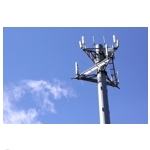 Smaller wireless network operators may be able to save on radio access network (RAN) costs by using an offering from Range Networks, a company that emerged from stealth mode this week. The offering, known as OpenBTS, is a software defined implementation of the GSM radio access network. The company also expects to launch an LTE version of the offering later this year, said David Burgess, Range Networks co-founder and CEO, in an interview.
Smaller wireless network operators may be able to save on radio access network (RAN) costs by using an offering from Range Networks, a company that emerged from stealth mode this week. The offering, known as OpenBTS, is a software defined implementation of the GSM radio access network. The company also expects to launch an LTE version of the offering later this year, said David Burgess, Range Networks co-founder and CEO, in an interview.
“It’s a different approach to network architecture that cuts deployment and maintenance [costs] and improves [network] trustworthiness,” said Burgess.
OpenBTS is based on open source software and has no annual license fee, Burgess said. “Customers can pay for maintenance and upgrades but [there is not a] tax to leave their network turned on,” he said. With current vendors, he said, annual licensing fees are a “pretty significant” portion of cellular network costs.
What makes OpenBTS special is that it enables network operators to build their core networks using VoIP and SIP, Burgess said. Companies that already deployed 2G or 3G networks using a traditional SS7 mobile application (MAP) core, would need a SIP-to-SS7 MAP gateway, he explained.
Using a combination of Range Networks’ hardware and software, network operators can build networks in which traditional GSM handsets are treated as virtual SIP endpoints, the company said.
“What we sell is a complete installation,” said Burgess. “If [a company] comes to us and purchases a network, what they will get are the RAN [radio access network] hardware for installation at tower sites; they get servers running core network components for installation in data centers; they get installation support to connect to their existing core and they get customer support to advise them on the RAN configuration.”
Range Networks sees a market for its product worldwide and has already made several sales internationally.
In the U.S. one smaller wireless carrier is already using Range Networks in a 12-site network that serves about 20,000 customers, Burgess said. “They had installed equipment from another vendor . . . but never got it to work,” he said.
Burgess believes Range Networks and OpenBTS will be popular with smaller network operators that would otherwise have chosen foreign vendors such as Huawei and ZTE that have come under scrutiny by the U.S. government. “The government has pretty much said don’t install [products from those companies] or there will be consequences,” said Burgess.
Later this year, Range Networks also is planning a cloud-based version of its offering, Burgess said. Potentially such an option could further enhance the product’s appeal to smaller carriers with limited deployment budgets.

